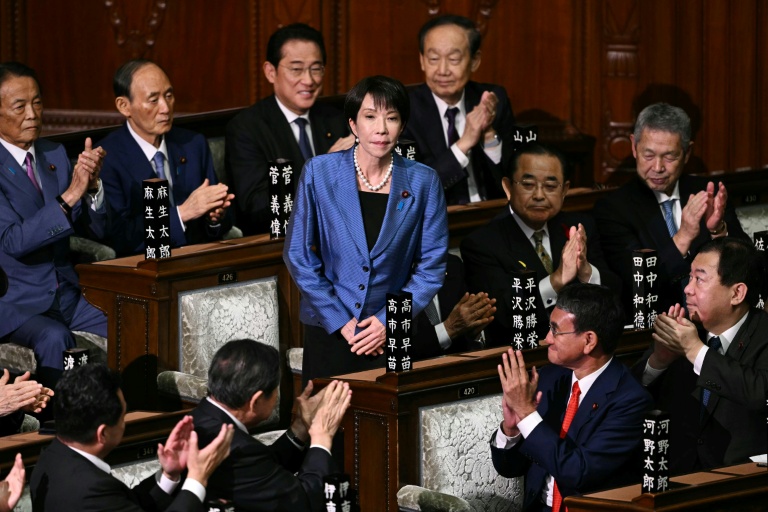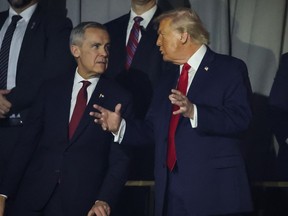World
Japan’s New PM Takaichi Aims to Boost Defence Spending Early

Japan’s newly appointed Prime Minister Sanae Takaichi is set to accelerate the country’s defence spending target, aiming for an increase to two percent of gross domestic product (GDP) by the end of the current fiscal year, which concludes on March 31, 2026. This move comes just ahead of a visit from US President Donald Trump, who is expected to arrive in Japan on Monday following his participation in ASEAN and APEC summits.
Japan has historically maintained a pacifist stance; however, the geopolitical climate, particularly concerns regarding China, has prompted a shift towards a more proactive defence policy. Reports from Jiji Press and Kyodo News indicate that Takaichi plans to formally announce this accelerated spending target during her inaugural policy speech in parliament.
Takaichi’s Defence Policy and Relationships
Takaichi, who became Japan’s first female prime minister earlier this week, is anticipated to emphasize the need to revise three key defence and security policy documents by the end of 2026. Her predecessor, Shigeru Ishiba, had previously set the target for increased defence spending to the 2027-28 fiscal year. As part of her new strategy, Takaichi intends to strengthen Japan’s military capabilities amidst rising security concerns in the region.
Foreign Minister Toshimitsu Motegi stated that Japan will communicate its commitment to enhancing defence capabilities during discussions with Trump. The US has around 60,000 military personnel stationed in Japan and has urged its allies to increase their defence expenditures.
Although Takaichi has been characterized as a hawk regarding China, she plans to articulate the importance of maintaining a constructive relationship with the nation. Reports suggest she will acknowledge both the necessity of dialogue and the prevailing security concerns.
Domestic Challenges and Economic Priorities
As Japan’s fifth prime minister in as many years, Takaichi leads a minority government and faces significant domestic challenges, including rising inflation, which has been a growing concern among voters. In her first comments after taking office, she expressed a commitment to implement a “responsible and proactive fiscal policy.” This policy would focus on balancing investments in economic security, energy, and emerging technologies, such as artificial intelligence and semiconductor production, while maintaining fiscal discipline.
Takaichi also addressed the issue of immigration, acknowledging a need for foreign workers in Japan’s economy. However, she highlighted concerns about illegal activities among some foreign nationals, stating that these actions have contributed to public anxiety. She emphasized the need for a clear distinction from xenophobia while firmly addressing any illegal practices.
Recent polling by the Yomiuri Shimbun indicates a positive reception for Takaichi’s leadership, with support for her cabinet at 71 percent, a significant increase compared to Ishiba’s 34 percent in September. This approval rating ranks as the fifth highest since 1978 for newly inaugurated cabinets in Japan.
As Takaichi prepares to outline her defence and economic strategies, her administration faces the dual challenge of addressing both international security pressures and domestic economic stability, marking a significant moment in Japan’s political landscape.
-

 Politics1 month ago
Politics1 month agoSecwepemc First Nation Seeks Aboriginal Title Over Kamloops Area
-

 World5 months ago
World5 months agoScientists Unearth Ancient Antarctic Ice to Unlock Climate Secrets
-

 Entertainment5 months ago
Entertainment5 months agoTrump and McCormick to Announce $70 Billion Energy Investments
-

 Science5 months ago
Science5 months agoFour Astronauts Return to Earth After International Space Station Mission
-

 Lifestyle5 months ago
Lifestyle5 months agoTransLink Launches Food Truck Program to Boost Revenue in Vancouver
-

 Technology3 months ago
Technology3 months agoApple Notes Enhances Functionality with Markdown Support in macOS 26
-

 Lifestyle3 months ago
Lifestyle3 months agoManitoba’s Burger Champion Shines Again Amid Dining Innovations
-

 Top Stories2 months ago
Top Stories2 months agoUrgent Update: Fatal Crash on Highway 99 Claims Life of Pitt Meadows Man
-

 Top Stories2 weeks ago
Top Stories2 weeks agoHomemade Houseboat ‘Neverlanding’ Captivates Lake Huron Voyagers
-

 Politics4 months ago
Politics4 months agoUkrainian Tennis Star Elina Svitolina Faces Death Threats Online
-

 Sports5 months ago
Sports5 months agoSearch Underway for Missing Hunter Amid Hokkaido Bear Emergency
-

 Politics5 months ago
Politics5 months agoCarney Engages First Nations Leaders at Development Law Summit



















